How to explain complex concepts
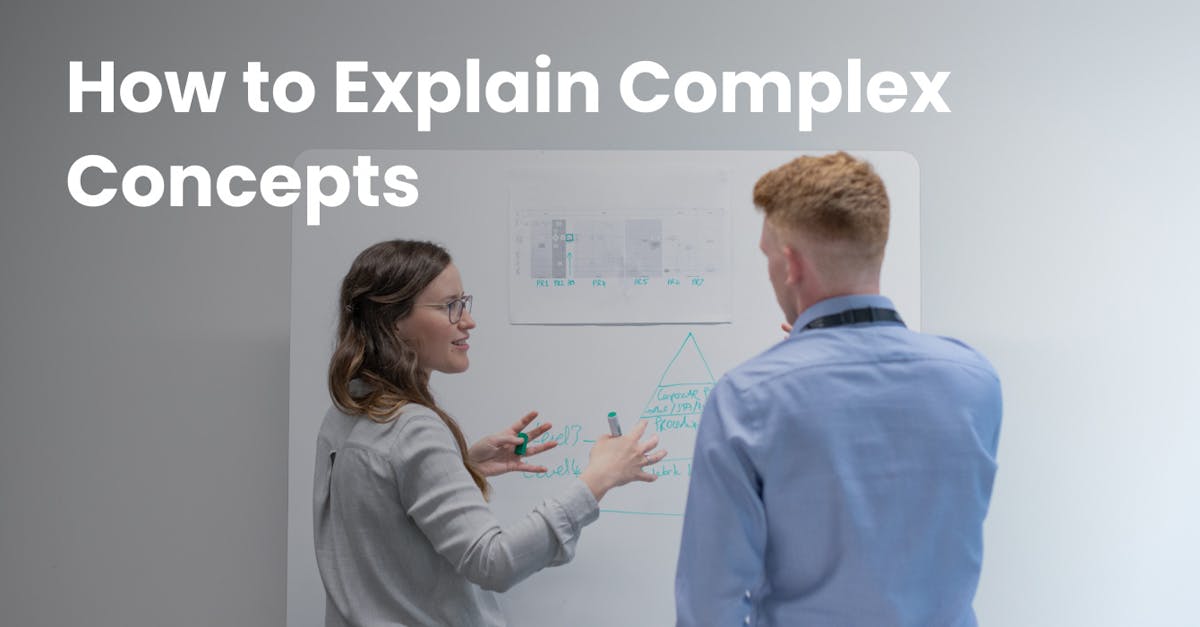
If you’re an instructor or a leader in your organization, one of your core functions is knowing how to explain complex concepts. Being able to do this consistently takes practice, training, and experience. So in this article, we’ll help you learn about different techniques for communicating complex concepts better.
What is a complex concept?
A complex concept is an intricate idea that can be broken down into simpler and more basic thought processes. In order to understand these concepts, your learners need to be able to dissect ideas and not see them as just black and white in order to understand them at a deeper level. Such complex concepts are prevalent in subjects like science, math, and philosophy, and they usually call for specialized knowledge to comprehend. A great example of a complex concept would be Einstein’s theory of relativity. This complex concept requires a deep understanding of space, time, and gravity, and how these relate to one another.
As an instructor or a team leader, it’s your responsibility to take the time to fully understand a complex idea and uncover its most difficult aspects before trying to discuss it with your learners. Once you’ve got a good grasp of the concept, that’s when you’ll be able to explain it simply and confidently.
Ways to explain complex concepts
If you’re trying to find out how to explain complex concepts more clearly, here are two ways you can consider:
Microlearning
Microlearning is a learning strategy that breaks down complex topics into easily digestible chunks of information through short lessons or modules. Microlearning courses can be distributed at predetermined intervals and accessed as many times as necessary, whenever and wherever the learner needs them.
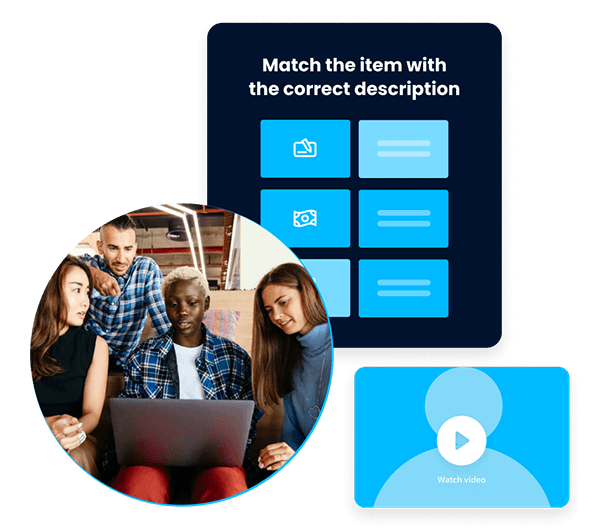
This learning design approach can be done in various ways to cater to different learning styles and keep learners engaged. It can take the form of a standalone course or as a supplement to in-person training sessions or blended learning environments.
Gamification strategies like challenges, game-based quizzes, and badges can also be used hand in hand with microlearning to boost learner engagement and increase comprehension. By dividing the course into key areas and providing interactive methods of delivery, you can maximize a learner’s ability to absorb and retain complex concepts and improve their training outcomes.
Microlearning platforms such as EdApp allow you to quickly create and distribute bite-sized courses for your learners using features like a user-friendly Creator Tool, a free course library, lesson templates, and gamification elements. These tools also empower your learners to take learning into their own hands by giving them the flexibility to learn anywhere on any device.
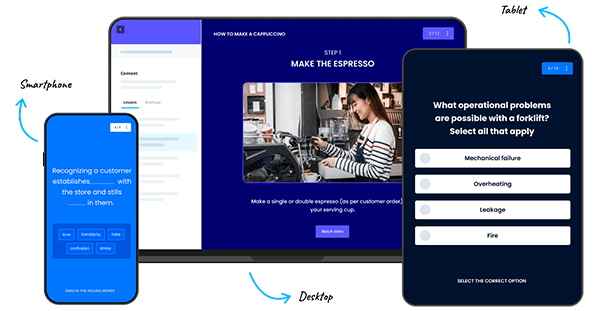
One of the major benefits of using EdApp as a microlearning tool is its built-in performance dashboards and analytics and reporting suite that provide invaluable learner data. Through these knowledge reports, you can determine how to explain complex concepts more effectively.
Start Teaching Complex Concepts to your learners today
Feynman Technique
Nobel-Prize winner Richard Feynman, also known as “The Great Explainer”, was famous for his ability to explain even the most difficult topics in a manner that was as clear-cut as possible. He had perfected four steps to express complicated ideas, and these served as the foundation for his success. You can also incorporate these four steps when explaining complex ideas to your learners:
1. Identify the topic and conduct research
Despite how straightforward it seems, knowing your topic and conducting proper research is still one of the most vital starting points for explaining complex ideas. Through this first step, you’ll be able to define terms and build a foundation of knowledge regarding the topic.
2. Break down the information to understand it and explain it simply
To avoid feeling overwhelmed by complex concepts, you should break down the information into more digestible chunks and find the connections between them. Ask yourself, “How are these bits of information linked to one another?”

3. Find gaps in learning and build on knowledge
Once you’ve done your research and broken down a topic into manageable concepts, the next step is to sort the information into different components. This way, you’ll be able to identify possible knowledge gaps and polish your understanding through continuous research.
4. Find gaps in learning and build on knowledge
Using examples and analogies to simplify complex concepts can increase comprehension, reduce misconceptions, and improve the visualization of abstract concepts. Through these instructional strategies, learners are introduced to a complex idea through a topic that they’re already familiar with, allowing them to develop a better understanding through connections.
Other tips for communicating complex concepts
Use stories or build a narrative
Using data, numbers, graphs, and statistics are effective ways to grab your learners’ attention and establish credibility, but relying too heavily on these methods might bore them in the long run. Consider using storytelling to paint a clearer picture of your topic. By building a narrative that’s interesting and immersive for your learners, you can easily engage them and help them better understand any complex concept.

You can choose to create more specific or theatrical stories. Whatever method you choose, make sure it’s simple to understand, concise, and doesn’t go into great detail but instead goes right to the point.
Use visuals like images, drawings, charts, or videos
Research states that humans process visuals 60,000 times faster than text. You can use this knowledge to your advantage. Help your learners understand information more clearly by showing them visuals in the form of images, illustrations, charts, infographics, or videos. These can show your team how certain ideas work, which is very useful for companies that delve into complex processes.

If you’ve ever seen explanation videos on YouTube, you’ll know that explainer videos with animation and motion graphics can also greatly aid learners in understanding a topic. It’s also quite useful if you want to discuss something that calls for more abstract imagery or more detailed explanations. The visual manner in which you decide to convey your information will determine how your learners will engage with and retain the new knowledge.
Use technology that helps people better understand
Explaining complex concepts is a difficult undertaking, but you don’t have to do it all on your own. You can use technologies such as micro learning tools and elearning development software to help your learners process difficult topics. These tools also offer dashboards, which show and update data in real-time through tables, charts, and graphs. This is particularly helpful for tracking learner progress, understanding their challenges, and addressing learning gaps.
One tool that will help you explain complex concepts more easily is EdApp. Apart from its microlearning approach to learning, its easy-to-use cloud-based software gives you all the tools you need to present complicated information in a clear and effective way. It offers multiple features like a course library, discussions, and virtual classrooms.
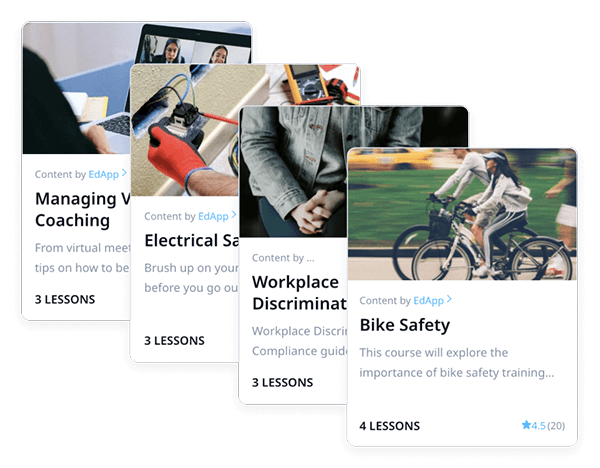
And with the platform’s Creator Tool, you can say goodbye to out-of-date elearning courses. Simply choose from over 80 templates and enhance your learning materials with videos, images, games, quizzes, and more. This way, your learners will be more engaged with the lessons and have an easier time understanding them.
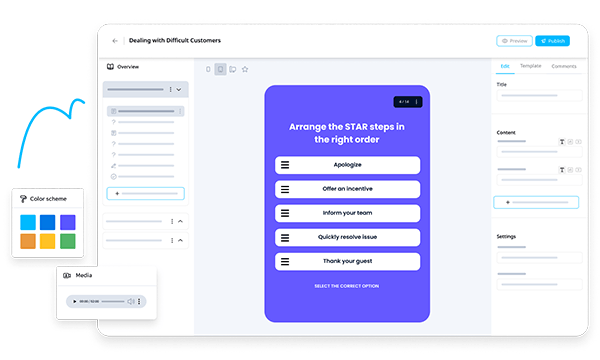
Instructional designers at EdApp recommend not overthinking training materials to keep them simple. Take note that the delivery of your learning content should be straight to the point, and void of any unnecessary ”fluff”, which can be challenging if you’re new to microlearning.
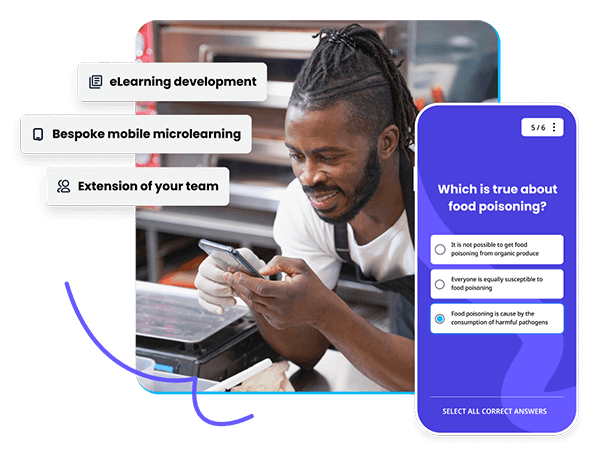
At a loss for where to start? You can avail EdApp's Course Creation Services which allow you to harness the power of a developer, designer, and training expert – all at your fingertips. Through this feature, you’ll have a chance to work with EdApp’s team of expert instructional designers to create impactful bite-sized courses.
Join EdApp for free and explain complex concepts through a microlearning approach!
Author
Hannah Malmstrom
Hannah is an eLearning writer who dedicates her time to creating in-depth content about EdApp, a multi-award-winning mobile LMS that has pioneered one of the most progressive microlearning solutions on the market. She brings years of writing experience in the online software industry to her current role in the eLearning sphere. When she's not writing, you can find her catching up on new anime series or re-reading her favorite novels.
